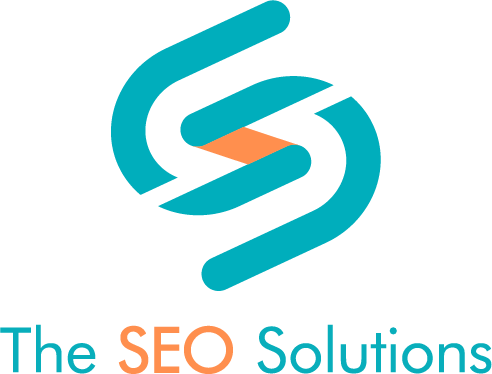In a world where content is king, it’s more important than ever to have a content strategy that will help you reach your target audience and engage them with your brand’s content marketing. A product-led content strategy can do just that! In this guide, we’ll teach you how to create and optimize product-led content for your audience. We’ll also give you some examples of great product-led content so you can see how it’s done. Let’s get started!
There are 2 types of content marketing strategy: content-led marketing strategy and product-led marketing strategy. Both are effective in their own ways, but product-led content strategy is gaining more popularity these days.
What Is Content-Led Marketing Strategy?
The goal of content-led marketing is to change how a target audience thinks, feels, and acts by:
- Encouraging them to learn more about a subject that is of interest to them.
- Exposing them to research or a documentary.
- Providing them with a pleasant surprise, mirth, or excitement.
- Or inspiring them with emotional and relatable stories.
What is product-led content? And how can you use it to reach your target audience?
Product-led content is a type of content that uses a product as part of the narrative to help illustrate a point, solve a problem or aid the audience in accomplishing a goal.
Product-led content is simply content that is created and optimized for your product. It’s designed to help your target audience learn about your product and its features. It can also be used to drive traffic to your product’s website or landing page.
Benefits of using product-led content marketing strategy
There are many benefits of using product-led content marketing strategy, including:
– Reach a wider audience: Product-led content marketing can be distributed across a variety of channels, including social media, email marketing, and even paid advertising. This means that you can reach a wider audience with your content.
– Engage your target audience: Product-led content marketing is designed to engage your target audience. By providing helpful and relevant information, you can keep your audience engaged with your product.
– Build trust and credibility: Product-led content marketing can help you build trust and credibility with your target audience. By providing helpful information about your product, you can show your audience that you’re an authority in your industry.
The Problem With Product-Led Content
Most product-led content marketing doesn’t do well because people don’t know how to write in a way that keeps the product as the center focus while still sounding natural and engaging.
Product-led content marketing isn’t an infomercial. It shouldn’t be a list of your product’s features or a sales pitch. If you want your product-led content to be successful, it needs to be interesting and informative. It should teach your audience something new or provide them with valuable insights. And most importantly, it should be relevant to your product.
It’s not direct response copywriting.
If you’re making a hard sell, you’ll lose the reader and your content marketing strategy will be ineffective.
On the other side of the balance, there are marketers who are so scared to be perceived as promotional that they don’t even mention their product or service.
Product-led content marketing should be a blend of both. You don’t want to be too promotional, but you also don’t want to ignore your product altogether.
The goal is to find the sweet spot in between.
How To Create Product-Led Content That’s Engaging and informative

Now that we’ve talked about what product-led content is and why it’s important, let’s take a look at how you can create product-led content that’s both engaging and informative.
The bottom line is that “a product-led content marketing strategy succeeds because it metamorphoses a product into a solution.”
The challenge with this method is that content marketers must do some market research to determine what keeps their consumers up at night before launching the product that will be the story’s protagonist.
Market research is critical to understanding what content will be most helpful and engaging for your target audience.
Once you understand what your target audience is struggling with, you can create content that addresses their needs. This content can be in the form of blog posts, articles, infographics, videos, or even e-books.
When creating product-led content, it’s important to keep the following in mind:
- Make sure your content is relevant to your product.
- Write in a way that’s natural and engaging.
- Focus on teaching your audience something new.
- Keep your product as the centre focus of your content.
If you can do these things, you’ll be well on your way to creating product-led content that’s both engaging and informative.
Examples of Product-Led Content Marketing
To help you get a better understanding of what product-led content looks like, let’s take a look at a few content marketing examples.
Example 1
Blendtec’s “Will It Blend?” series is a great example of product-led content.
In these videos, the company takes common household items and tries to blend them in their blender. These items include iPhones, marbles, and even golf balls.
While the videos are designed to be entertaining, they also serve a purpose. They show viewers how powerful Blendtec’s blender is and what it’s capable of blending.
This is a great example of product-led content marketing because it’s relevant to the product, it’s entertaining, and it teaches viewers something new about the blender.
Example 2
Another great example of product-led content marketing is GoPro’s “How To” series.
In these videos, GoPro showcases the different ways their cameras can be used. They cover topics like how to mount the camera, how to get started with time-lapse photography, and even how to edit your videos.
These videos are relevant to GoPro’s product, they’re helpful and informative, and they’re also entertaining.
By providing this type of content, GoPro is able to show their audience the different ways their cameras can be used. This helps to increase sales because it shows viewers the value of the product.
Example 3
One example is a blog called “The Sleep Judge”. The site’s mission is to help people get a better night’s sleep.
To do this, they offer helpful tips, product reviews, and even buying guides. All of their content is relevant to their product (sleep-related products), and it’s all written in a way that’s natural and engaging.
Example 4
Another website that does a great job at product-led content is “The Wirecutter”.
The site’s mission is to help people find the best products for their needs. To do this, they offer in-depth reviews, helpful guides, and even comparisons.
All of their content is relevant to their product (consumer electronics), and it’s written in a way that’s both helpful and engaging.
Example 5
One last example of product-led content is Apple’s “Designed by Apple in California” book.
This book is a coffee table book that showcases the different design elements of Apple’s products. It includes photos and descriptions of the materials used in each product, as well as the thought process behind the design.
This book is relevant to Apple’s products, it’s informative, and it gives readers a behind-the-scenes look at the design process.
By providing this type of content, Apple is able to show their audience the care and attention that goes into designing their products. This helps to increase sales because it shows viewers the value of the product.
As you can see, there are a number of different ways to create product-led content. The important thing is to make sure that your content is relevant to your product, it’s informative, and it’s entertaining. Do your market research to understand what type of content your audience wants, and then create content that meets those needs.
Getting Started With Market Research
Now that you understand the importance of market research, it’s time to learn how to do it.
There are a number of different ways to conduct market research for content marketing, but the most important thing is to make sure you’re doing it regularly. This will help you to stay up-to-date on the latest trends and ensure that your content is always relevant to your audience.
One way to conduct market research is to survey your audience. You can use a tool like SurveyMonkey to create a survey, or you can simply ask your audience questions on social media.
Another way to conduct market research is to use Google Analytics. This tool will show you how people are finding your website and what they’re doing once they get there.
Finally, you can also use social media to conduct market research. Pay attention to the posts that are getting the most engagement, and consider why those posts are so popular. You can also use social media to ask your audience questions directly.
No matter how you choose to conduct your market research, the important thing is to make sure you’re doing it on a regular basis. This will help you to create content that’s relevant to your audience and increase your chances of success.
4 steps to creating a product-led content strategy
Now that you know how market research is performed, it’s time to create your own product-led content marketing strategy. Follow these four steps to get started:
Step 1: Identify your target audience
The first step is to identify your target audience. Who are you trying to reach with your content? What needs or pain points do they have? Once you know who your target audience is, you can create a content marketing plan that is tailored to their needs.
Step 2: Create engaging content
The next step is to create engaging content. This means creating content that is interesting and relevant to your target audience. Remember, you want your content to be something that your audience will actually want to read or watch.
Step 3: Optimize your content for search engines
Once you’ve created your content, it’s important to optimize it for search engines. This means using keywords and phrases that your target audience is searching for. By optimizing your content, you can help ensure that it appears in front of your target audience when they are searching for information related to your product.
Step 4: Promote your content
After you’ve created and optimized your content, it’s time to promote it. This can be done through a variety of channels, including social media, email marketing, and paid advertising. The key is to get your content in front of as many people as possible.
Product-led content is a great way to reach your target audience and engage them with your brand. By following the tips above, you can create and optimize product-led content that will help you achieve your business goals. So what are you waiting for? Get started today!
For more information about product-led content or other content marketing strategies, contact content marketing agency – The SEO Solutions. We’re always happy to help!






